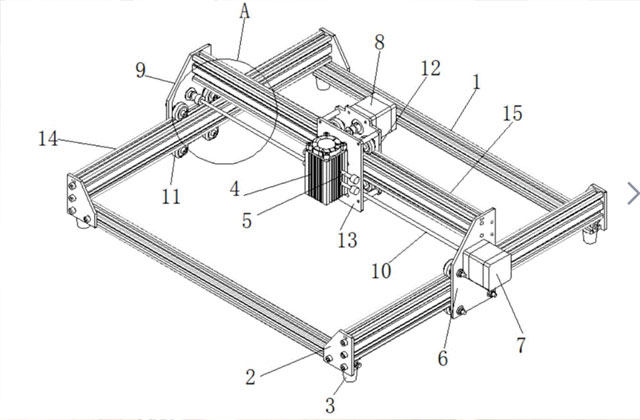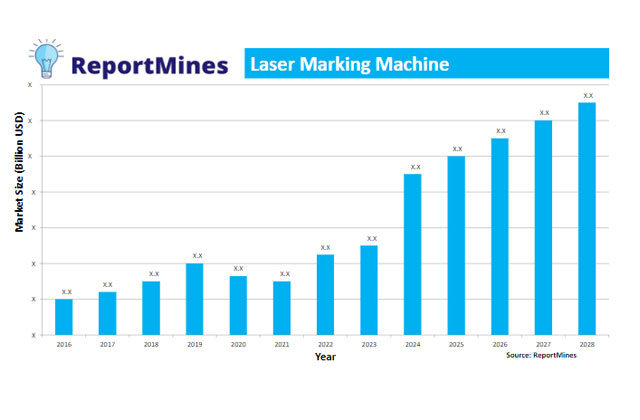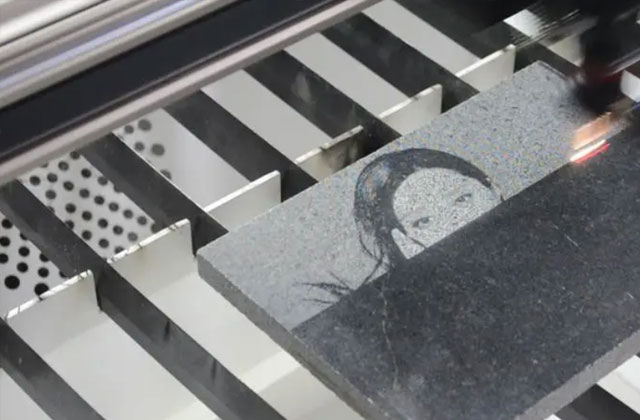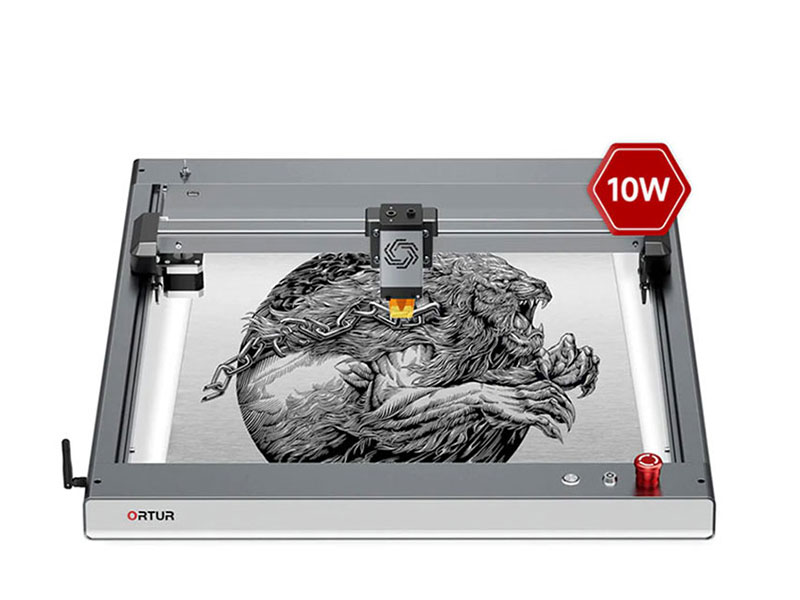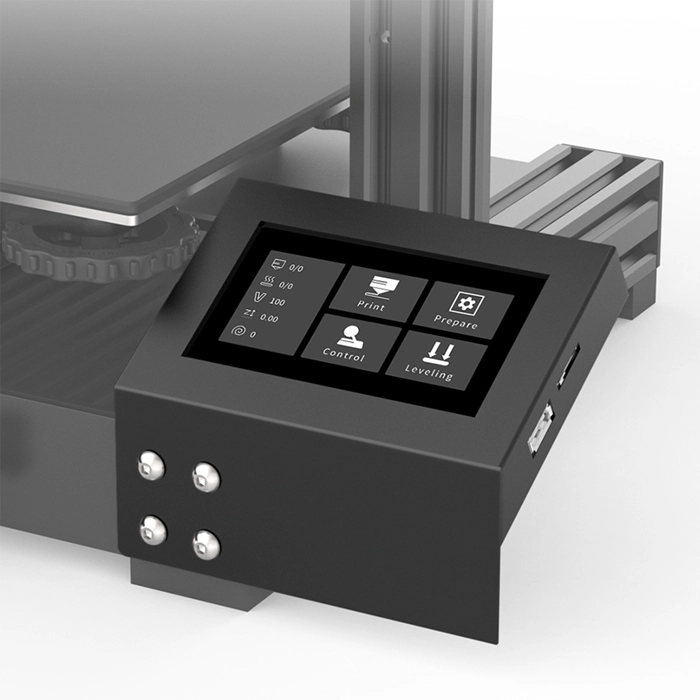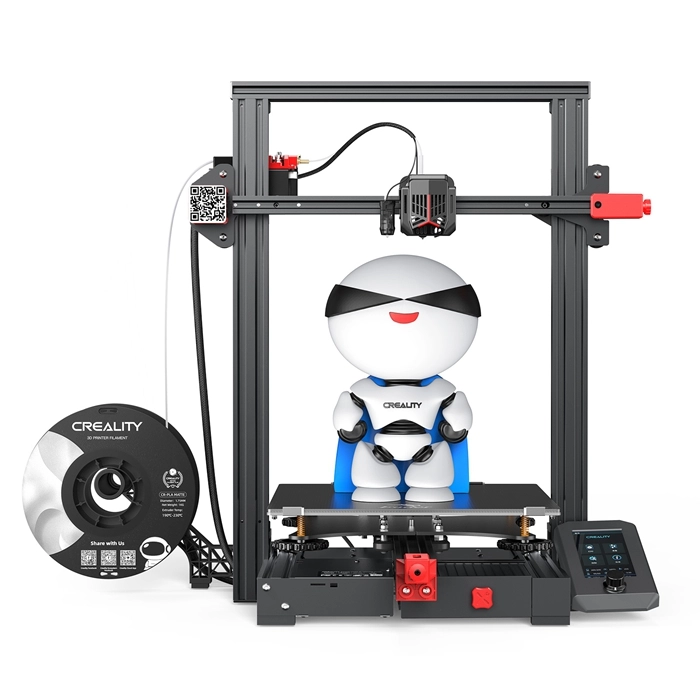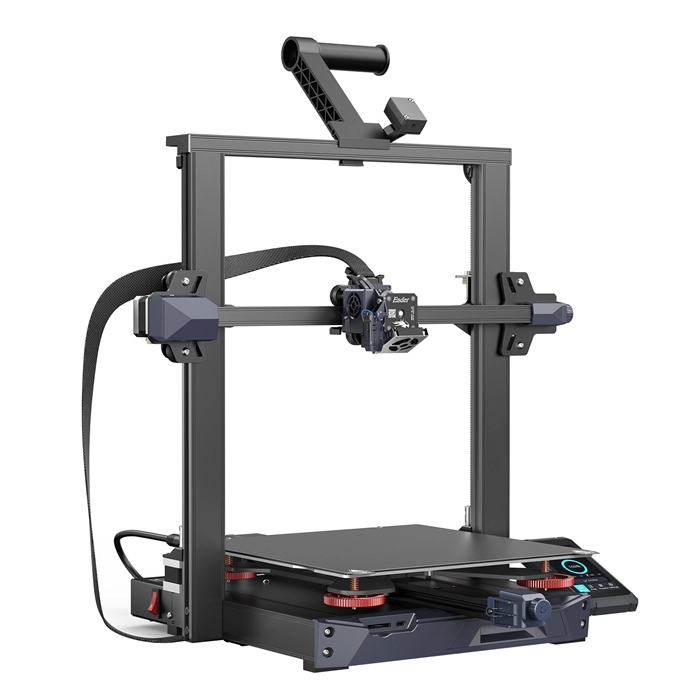The 3D printing industry is regarded as a "dark horse" that is growing against the trend under the epidemic. Data from the National Bureau of Statistics shows that in 2020, the added value of high-tech manufacturing above designated size will increase by 7.1% over the previous year, and many products have grown significantly, among which the growth rate of 3D printing equipment has more than doubled. Shenzhen 3D printing companies also handed in dazzling transcripts. In April last year, Shenzhen Creality 3D Technology Co., Ltd. created the industry "myth" of "160,000 overseas orders in half a month, and one unit is sold every 8 seconds".
"The overseas market is hot, but we are also firmly optimistic about the domestic market of 3D printing." Chen Chun, founder of Creative 3D, said in an exclusive interview with a reporter from Shenzhen Business Daily recently.
3D Printer Offers New Possibilities For Supply Chains
In 2020, the new crown pneumonia epidemic is spreading around the world, offline distribution channels are limited, global supply chains are blocked, protective materials such as masks and goggles are in short supply, and people are working at home for entertainment. is an opportunity. "3D printing provides new possibilities for solving global supply chain problems." Chen Chun said.
On February 8, 2020, Creation 3D shared the open source files of its 3D printing masks and goggles with the world, attracting a large number of users to download. The characteristics of 3D printing, such as fast speed, small batch, no mold, flexible manufacturing, and on-demand production, are favored by more and more people. On the one hand, people use 3D printers to print protective materials, or use 3D printers as a kind of home entertainment. equipment; on the other hand, 3D printing is also used as production equipment to print parts for automobiles and airplanes, etc. "It is very common for an overseas engineer to have three or five 3D printers in his home," Chen Chun said.
Last year, Creality 3D grew against the trend and made great strides. Its products were sold overseas, and its shipment exceeded 1 million units, setting a new record. Chen Chun revealed that in 2020, the sales volume of Creality 3D will increase by two times, and the sales volume will increase by 2.5 times, of which 90% are mainly exported.
According to the statistics of Antarctic Bear 3D Printing Network, among the 28 3D printing companies that have disclosed related business revenue of more than 100 million yuan in 2020, Creality 3D ranks first among consumer-level 3D printing companies with a revenue of more than 1 billion yuan. Up to now, Creality 3D has gained more than 1.2 million users and released nearly 70 3D printers. In the past 7 years, Creality 3D printers have moved from Shenzhen to 192 countries and regions.

To Popularize 3d Printing In China
Creality 3D was established in 2014 and the company is headquartered in Longhua District, Shenzhen. The four founders, including Chen Chun, made a wish at the beginning of the establishment of Creality 3D, "to popularize 3D printing in China and be a preacher of the 3D printing industry".
Chen Chun said that after the outbreak of the epidemic, 3D printers have entered people's field of vision, but many people may have only heard of the concept of 3D printing, but still do not know the role of 3D printing, what problems can it solve, the high cost, and the popularity of the market. A very long process. In terms of technology, as far as consumer-grade 3D printers are concerned, the technology gap between domestic 3D printing companies and foreign countries is not large. "The key is whether we can provide a massive model library, so that users can see something outside and use a 3D printer to make it at home, improving the practicability of 3D printers, rather than just providing a few models and letting 3D printers become for 'disposable toys'."
Chen Chun introduced that it is precisely because of this that Creality 3D built the Creality cloud platform. On the one hand, 3D printer companies can build a massive model library through the cloud platform, simplifying the way users obtain models, so that consumers do not need to spend too much time , out of the box. On the other hand, Chen Chun also hopes that more professional users of 3D printing can communicate and share with each other on the cloud platform, so as to attract more new users and further popularize the market.
Optimistic About The Domestic 3d Printing Market
It has been more than 30 years since the world's first commercial printer appeared in 1986. In Chen Chun's view, this era has given 3D printing a good opportunity. At present, 3D printing has penetrated into people's clothing, food, housing and transportation, ranging from eyeglass frames, masks, and shoes to aerospace, automotive 3C, jewelry and industrial design, and even in the medical industry, people have begun to use 3D printers for cell production. Culture, bone transplantation, etc. "The 3D printing industry has no ceiling. It continues to collide with all walks of life to create more connections. It will only be a '1+N' relationship." Chen Chun said.
However, Chen Chun also bluntly said, "It will take at least 10 years for 3D printers to truly enter thousands of households." In his view, the acceptance of 3D printing in overseas markets is significantly higher than that in China. For example, the United States probably has 5% of households have already started to use 3D printers, "while in China it may be less than 1 in 1,000."
Despite this, Chen Chun repeatedly emphasized to reporters that he is still optimistic about the domestic market. "The ratio of our domestic sales team and foreign sales team has always been close to 1:1, and the output value created by the domestic sales team is only 15%, but we firmly believe that the domestic market has huge room for growth in the future."
Chen Chun said that in recent years, more and more schools have begun to add 3D printing courses or majors. "This generation of children has received maker education in schools early, and their knowledge of 3D printing will gradually surpass ours. After the society, it will become a part of driving the development of the 3D printing industry, and more and more people understand and understand 3D printing, which is a basis for 3D printers to enter thousands of households." Chen Chun said. HTPOW believes that 3D printers will become an economic development trend in the future.



